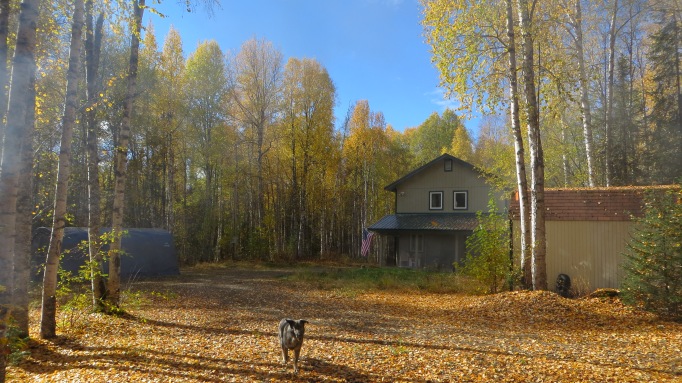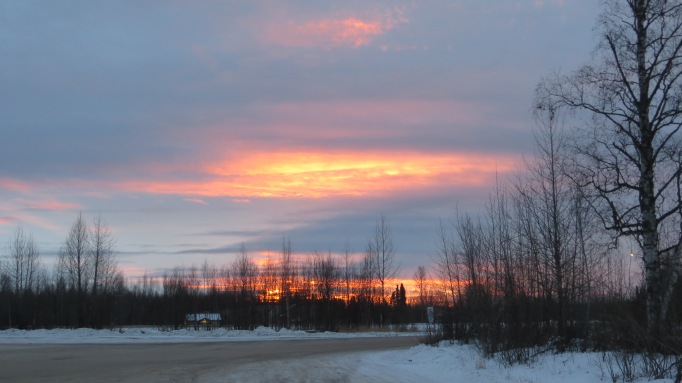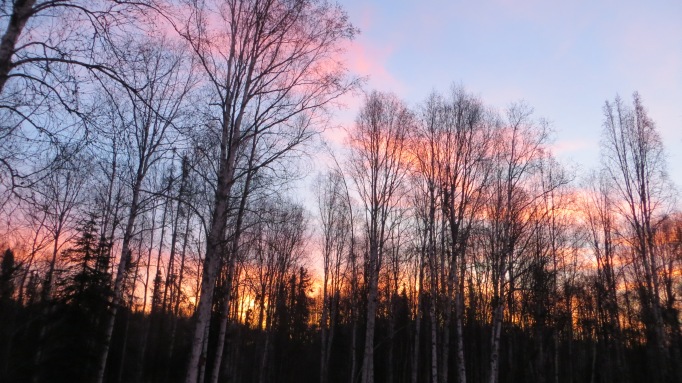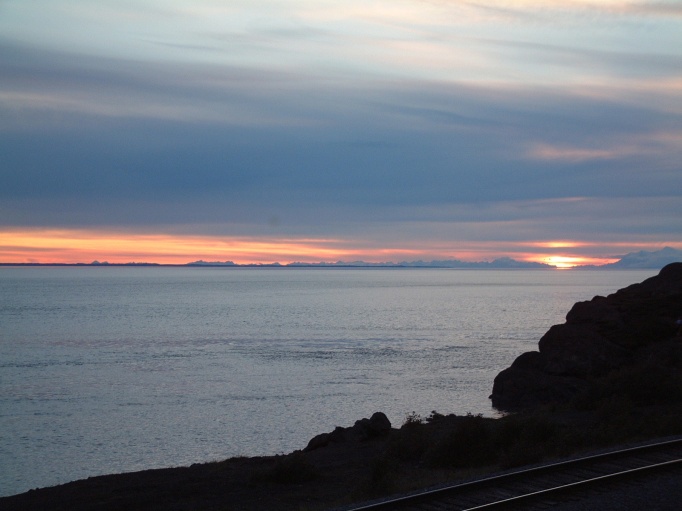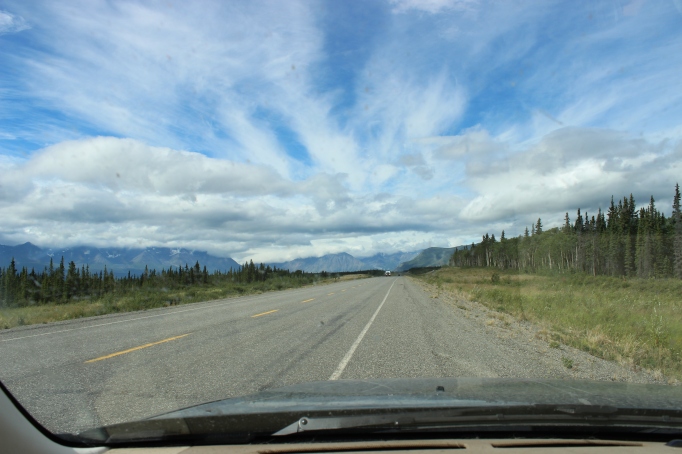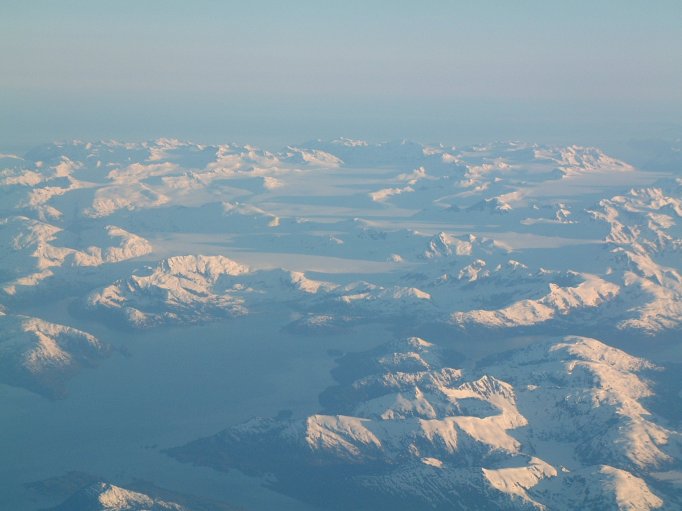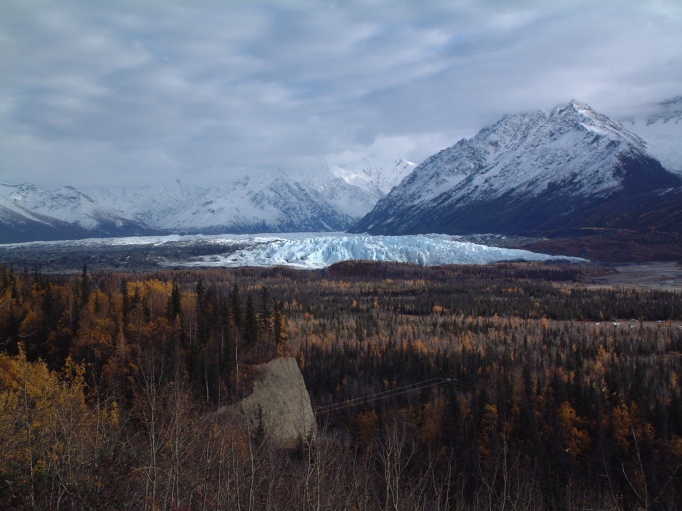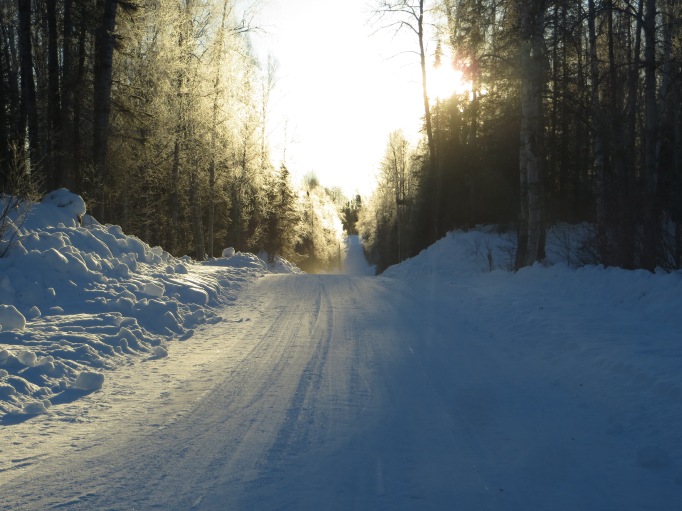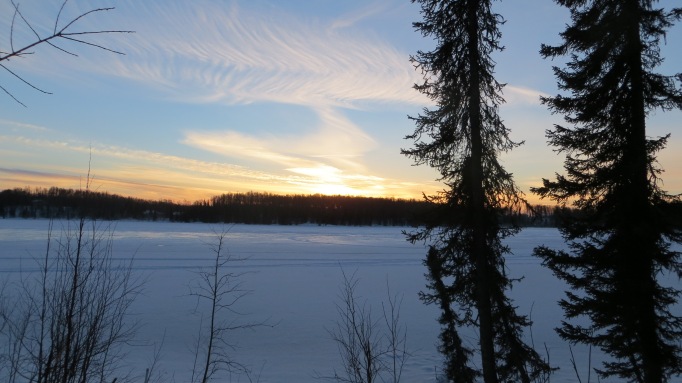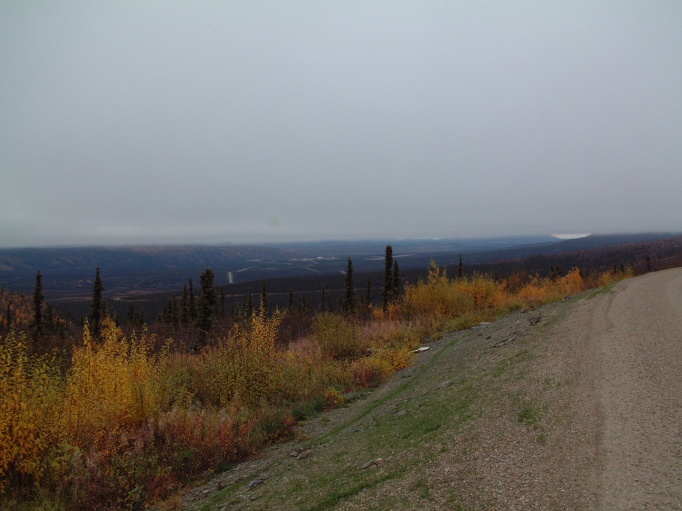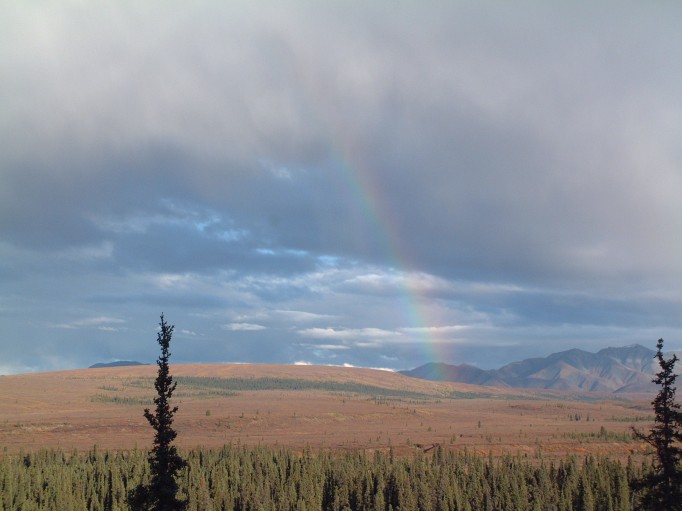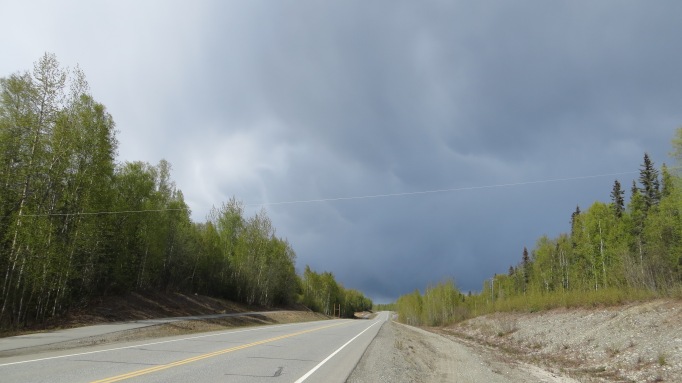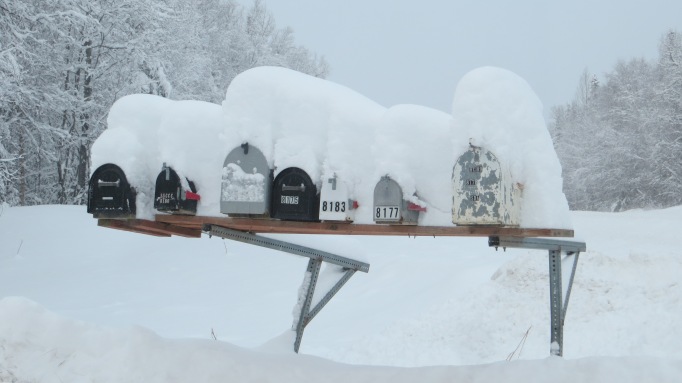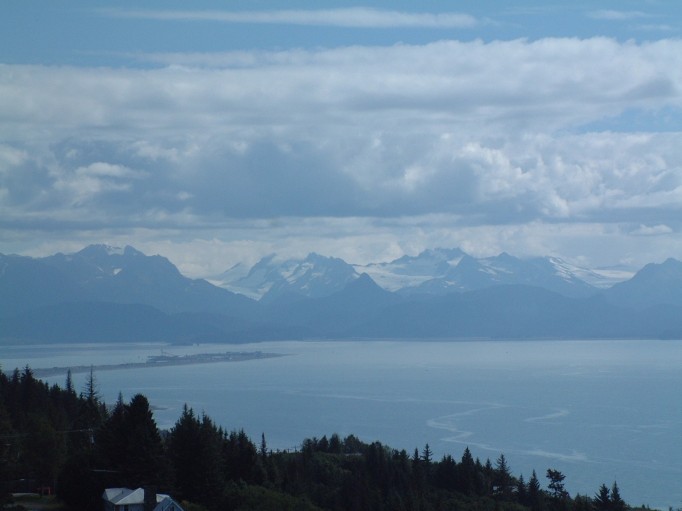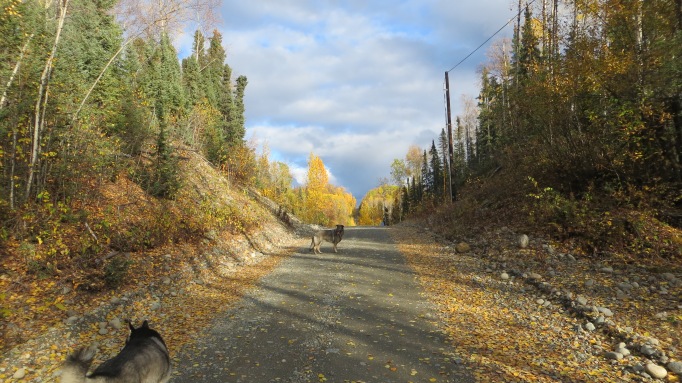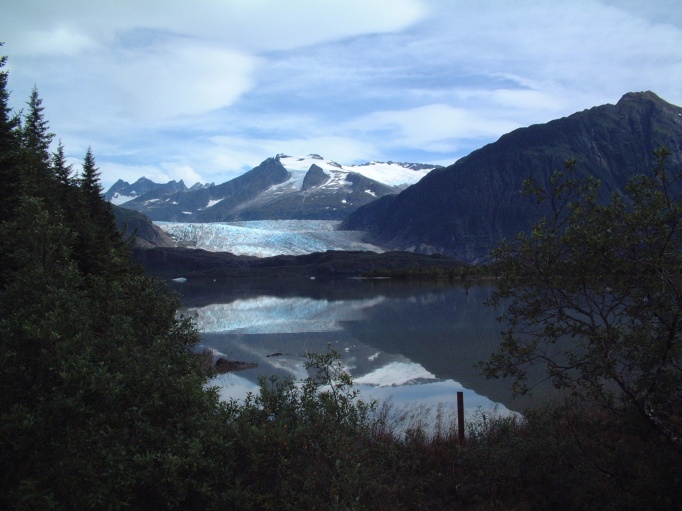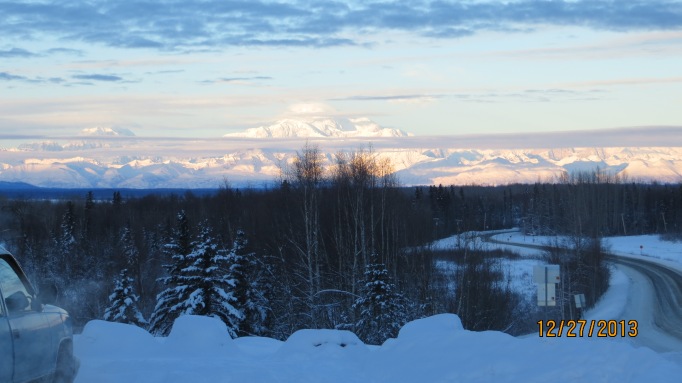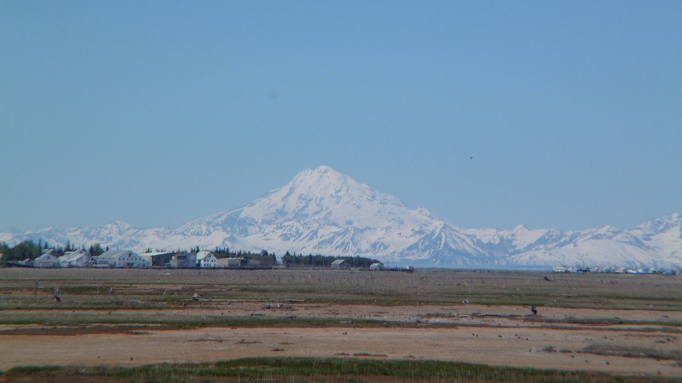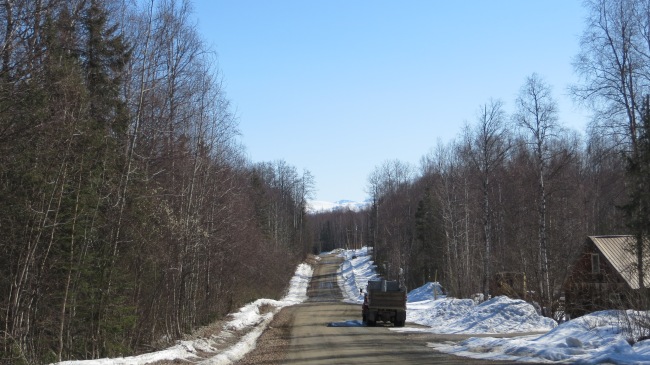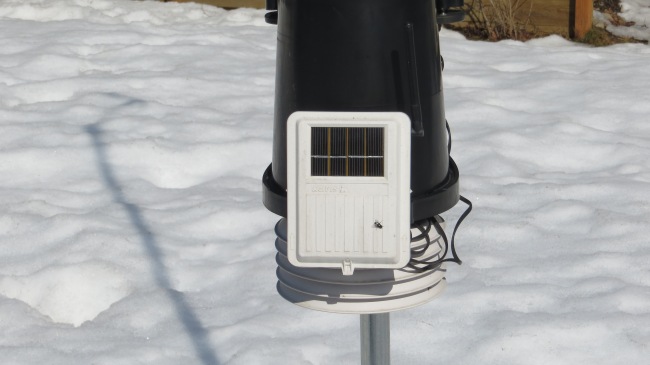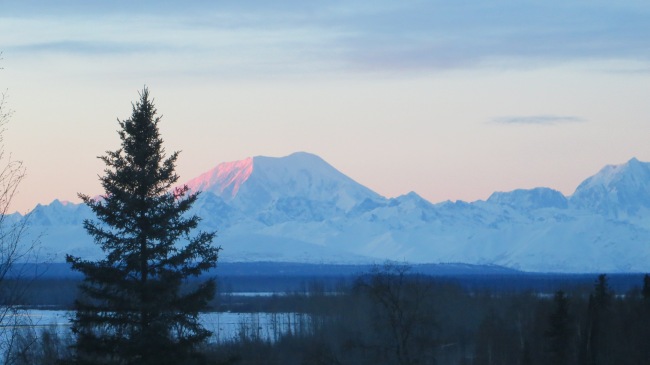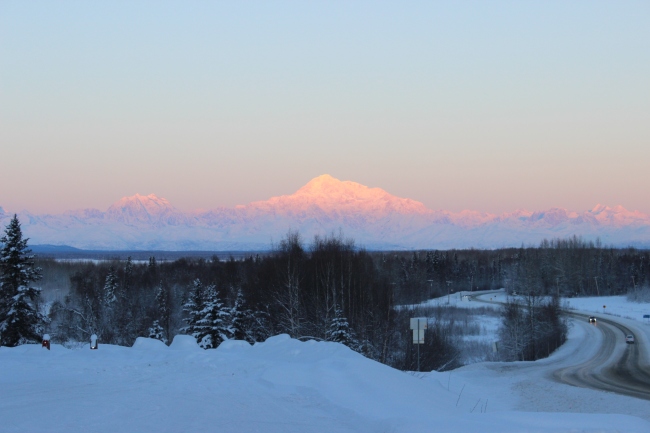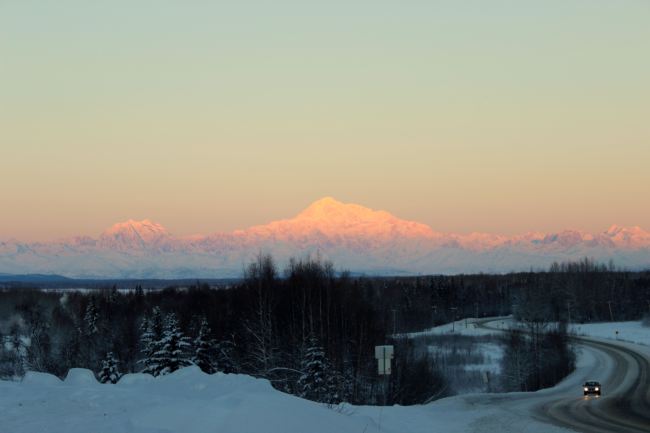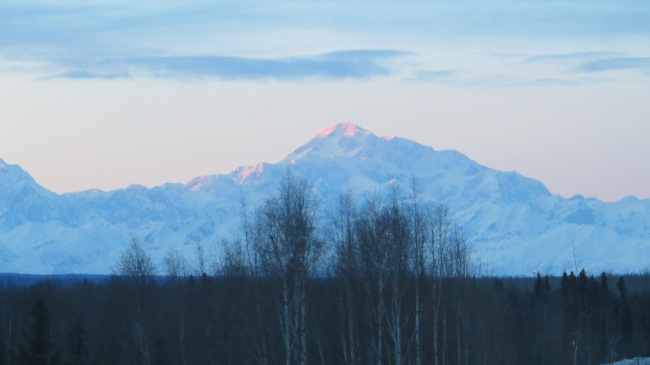I knew when I moved up here I would be seeing far more large mammals than I did anywhere else I’d lived mainly because few places in the lower 48 can boast such a variety of big wildlife. I also knew from my spate of visits from ’96 through ’05 the density of caribou, moose and bears was much higher in the Interior than any place in the lower 48. While many folks seem to feel I’m borderline crazy for wanting to live someplace where seeing grizzlies or moose in their natural setting is more the rule than the exception I find this to be a most exciting environment; just knowing that such large and powerful mammals are in the vicinity kinda charges the atmosphere and makes one feel more ‘at home’ with Nature. Prior to making trips up here I’d seen a few black bears at great distance in Great Smokey Mountain National Park and spent hours trying to break Anana from her desire to chase the ubiquitous white tailed deer in SE Michigan but that was about it for larger mammals in the wild. Before I made my first Alaskan visit I spent weeks reading everything I could find on the state and figuring prominently in most of those readings were discussions of the wildlife. By the time our plane landed at the Juneau airport in early September, 1996 I thought I was pretty well prepared to handle observing bear, moose, caribou and Dall Sheep ‘up close and personal’. It only took seeing my first moose along the West Glacier Trail in Tongass National Park to show me how wrong I was in this belief! However, said encounter was at a safe distance and the two moose cows were much more interested in the dwarf willow they were munching than three lower 48er’s so I came away wide eyed and already well and truly bitten by the ‘Alaska bug’.
During that same trip we spent four days in Denali NP&P and while the weather was not great we did see lots of wildlife around the Teklanika campsite where we camped in tents. I had an experience I still remember vividly to this day when I arose one morning – I was almost always the first one up – and was getting breakfast underway. I dug the white gas camping stove out of the back of our rental Ford Explorer, primed it and managed to get it started; I then went digging for the quart pot, filled it with water and set it on the stove to boil. Finally I went searching for the instant coffee and instant oatmeal. This was before I learned the value of staging the morning’s necessities the previous evening! I found the instant coffee first and noticed the pot was almost boiling so I dipped my mug into it, added a couple spoonfuls of coffee, stirred it and then turned back to hunting for the oatmeal. I finally found it, freed it from the pack and turned around…and froze. A large Timber wolf was no more than ten feet away from me and was stretching its neck in the direction of the coffee. He had the most beautiful yellow eyes and I also noticed he was fitted with a radio collar; later I learned from a ranger that he was one of the alpha males from the pair of wolf packs that called the Teklanika area ‘home’. We stared at each other for what seemed like minutes but was undoubtedly no more than a few seconds; I remember feeling no fear but rather a sense of awe that such a magnificent creature was so willing to share my immediate space. I slowly turned to get my camera but when I turned back he was no where to be seen. I soon learned I had been far too close to this wolf although it was he that had initiated the close proximity; seeing wolves even in Denali is a rare treat and I felt humbled that I’d been so close to such a gorgeous top predator.
I’ve spent a lot of time in Denali NP&P; every trip I’ve made to Alaska during the aforementioned span I spent at least three days in the park except on spring trip to the Kenai. I always camp at Teklanika and usually will tour the Visitor’s Center if its not too crowded just to look at the displays of grizzly ravaged camping gear. I find seeing the huge teeth marks in pots or massive claw tears in the remnants of a steel drum serve as good reminders of the raw power of these apex predators. On virtually every trip to the Park I’ve seen grizzlies but generally from the safety of the Park buses. However, that’s not always the case; while solo camping in 1998 I heard grizzlies snuffling and snorting outside my tent in Teklanika as they hunted for roots and berries; that’s a humbling experience lying wrapped up in a sleeping bag looking at two thin layers of nylon forming the only barrier between you and the bears! On that same trip I hiked to the ridge line across the Teklanika River and while walking the ridge saw a grizzly boar maybe 100 feet down the side of the ridge in a blueberry patch. He saw me the same time I saw him; thankfully I’d paid attention to the rangers when they explained how to handle such a surprise and far too close encounter. I slowly raised my arms up over my head and talked very softly to the bear while slowly moving my arms back and forth; in this case the bear did exactly as I’d been told and stood up on its hind legs (when it did so I darn near peed my pants!), snorted a few times, dropped to all fours and walked away from me. Needless to say I slowly backed away from him and once I crossed the ridge and was out of sight I really beat feet down the hill and back across the river!! During another trip in 2001 I was sharing my tent with a college buddy; one morning I awoke to hear him softly calling my name. I was still very much asleep when he said; “There’s something big outside!”. I listened and could hear something definitely large moving around; I stayed in the tent until I no longer heard any sound and then scrambled out of my sleeping bag, into my boots and out of the tent. All the sites in Teklanika feature a small pull out area for vehicle parking, a fire pit and a picnic table; it had been a cold night and the picnic table was covered with a thick layer of frost. On the corner of the picnic table closest to the tent I found the imprint of a bear paw; the pads had melted the frost (see image below). Without question we had a grizzly within ten feet of us who was probably investigating the white gas stove which we’d left atop the picnic table albeit sans any food or food containers; both these kinds of items were stored inside the rental vehicle.

Grizzly paw print in frost on Teklanika picnic table
Given my wildlife experiences which have all been positive save two – one involving a black bear when I was solo camping in Kachemak Bay State Park in the late spring of 2000 and another involving a moose cow with her spring calf during the same trip – I’ve come to really enjoy observing wildlife although I prefer to do so from a safe distance and I will never make the mistake so many people do of thinking any wild animal is something I can approach and try to interact with in its natural setting! I’ll never forget walking along the Park Road on a warm, sunny September day and seeing an adult grizzly foraging well off the road on a hillside. There was a man with a young child part way up the hill; the man was encouraging his child to move closer to the bear as he set up his camera!! I was all set to call out to him when a Park bus rounded the corner and the driver saw what was happening, stopped the bus, pulled the man and child back to the road and proceeded to read the man the ole riot act. Its this kind of stupidity that finally led to Denali’s first human death from a bear attack in 2012. Some idiot was solo hiking around the Toklat River and apparently spied a grizzly. Although no one witnessed what occurred his camera was found with his remains and showed a series of images of the grizzly getting larger and larger; if memory serves the last one looked to be taken at maybe fifty feet! Keep in mind anything under a quarter of a mile is considered a close encounter with a bear and is way too close. Sadly this eventually ended in the death of the grizzly which was probably only protecting its own personal space…
I have seen a number of grizzlies since settling in up here although most have been a distance; with this said I know they’re around because I’ve seen their scat, tracks and a few weeks back I caught sight of the south end of a north bound grizzly in the boreal forest that exists on my 2.4 acres and indeed surrounds this entire area. I would never have known it was there if I hadn’t heard the dogs going bonkers on the first floor. Just yesterday morning the dogs once again alerted me to wildlife in close proximity; in this case it was a moose cow with her yearling calf foraging on my land:

Moose cow foraging in the back yard – October 13, 2013

Probable yearling moose calf in the back yard
I apologize for the poor lighting; it was only around 08:15 AKDT and it was overcast and raining so there was just too little light. These moose remained in the yard for maybe fifteen minutes before sauntering away to the east. I was pleased to see it was a cow and calf as we’re into the rut now and I want nothing to do with any bull moose during that time! Moose are responsible for more human deaths in Alaska than bears and during the rutting season the bulls are just full of blood lust and will go out of their way to kill any creature they feel is a threat or even just an annoyance. Having had to run for my life from a moose cow protecting her spring calf in Kachemak Bay State Park I know these magnificent animals are not just big, dumb and slow ‘Bullwinkles’. Believe me when I tell you they can move lightning fast even in dense forest and thick underbrush and they are surprisingly agile to boot. I was not pleased to see Anana’s reaction; she would have loved to try to chase them and that could easily be a death sentence for her. I saw what their hooves can do as I was forced to jettison my backpack during the aforementioned altercation and the cow ran over it tearing a large hole all the way through it and destroying my favorite compass in the process.
Most folks would probably prefer to just not have to deal with such issues but for me sharing the land with these creatures is part of the magic I feel living in Alaska. Indeed, I really am not even so much ‘sharing’ the land as I am intruding into the wildlife’s terrain; after all, this is truly their home! Because of this I really do try to be respectful and always remember that I am a visitor to the wildlife’s home. I want to make every effort to peacefully co-exist with all the animals that may wander in this area and that means learning as much as I can about their lifestyles, habits and range. I very much enjoy being able to watch them without disturbing them and especially to capture their beauty and power in video and still imagery. The more I learn about the moose, caribou, bears, foxes, eagles and other wildlife the closer to Nature I feel and that’s a wonderful feeling. It really is an honor to be able to share this land with so many large mammals and I wouldn’t trade my experiences – past, present and future – for anything!
